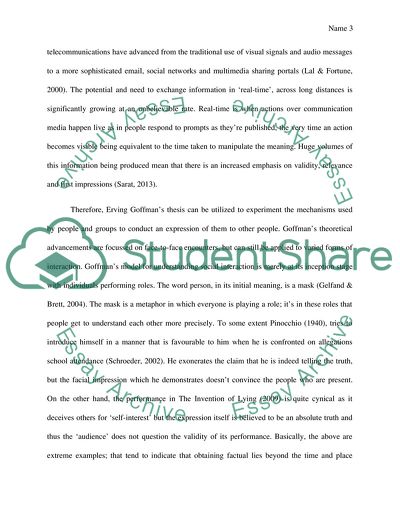Cite this document
(How Has The Rise of Communications Media Affected Patterns of Social Interaction Literature review Example | Topics and Well Written Essays - 2500 words - 1, n.d.)
How Has The Rise of Communications Media Affected Patterns of Social Interaction Literature review Example | Topics and Well Written Essays - 2500 words - 1. https://studentshare.org/journalism-communication/1849190-media-theory
How Has The Rise of Communications Media Affected Patterns of Social Interaction Literature review Example | Topics and Well Written Essays - 2500 words - 1. https://studentshare.org/journalism-communication/1849190-media-theory
(How Has The Rise of Communications Media Affected Patterns of Social Interaction Literature Review Example | Topics and Well Written Essays - 2500 Words - 1)
How Has The Rise of Communications Media Affected Patterns of Social Interaction Literature Review Example | Topics and Well Written Essays - 2500 Words - 1. https://studentshare.org/journalism-communication/1849190-media-theory.
How Has The Rise of Communications Media Affected Patterns of Social Interaction Literature Review Example | Topics and Well Written Essays - 2500 Words - 1. https://studentshare.org/journalism-communication/1849190-media-theory.
“How Has The Rise of Communications Media Affected Patterns of Social Interaction Literature Review Example | Topics and Well Written Essays - 2500 Words - 1”. https://studentshare.org/journalism-communication/1849190-media-theory.


